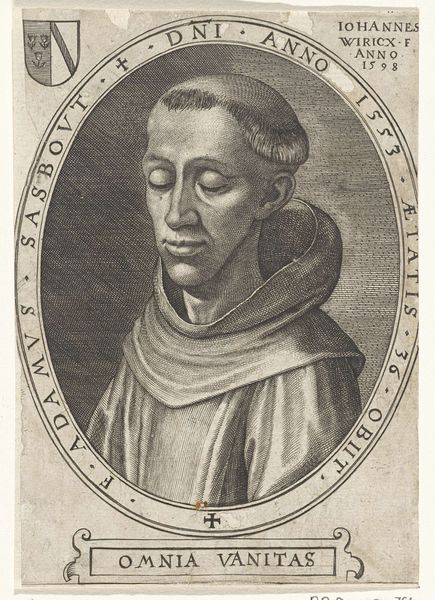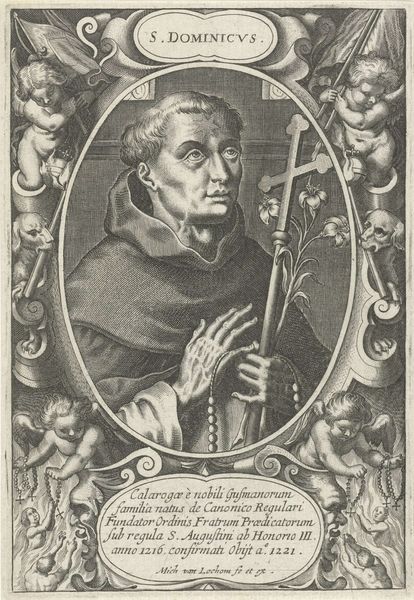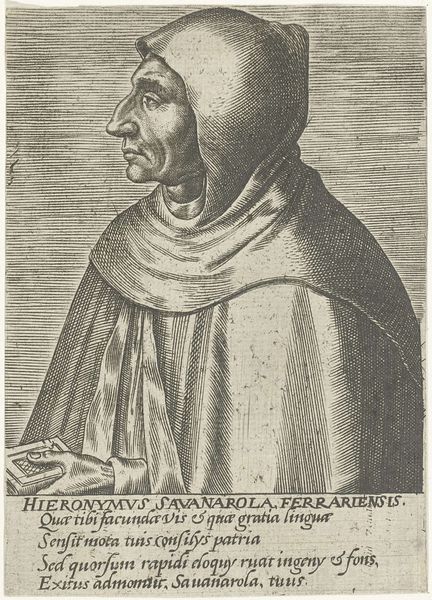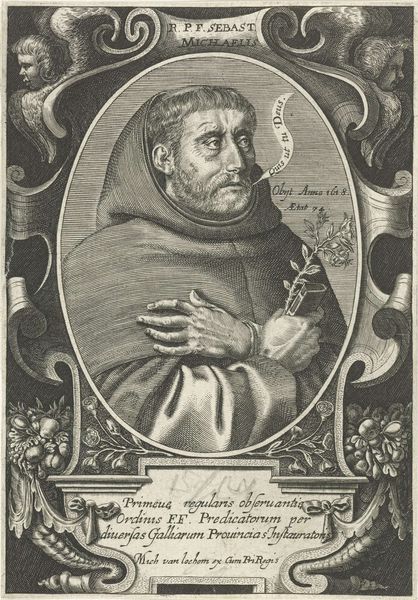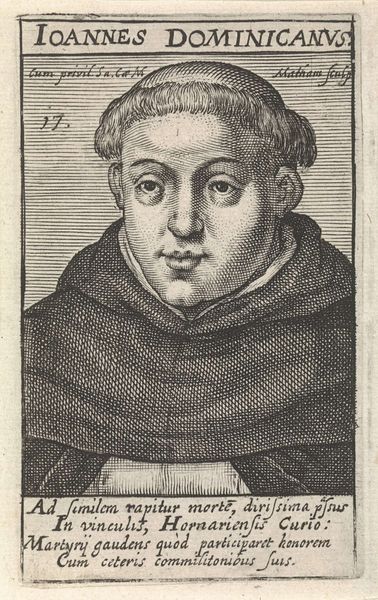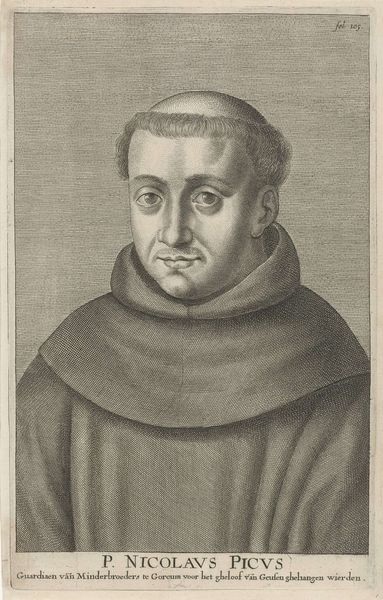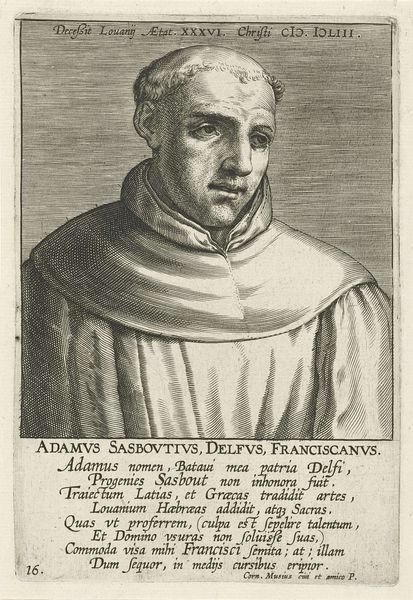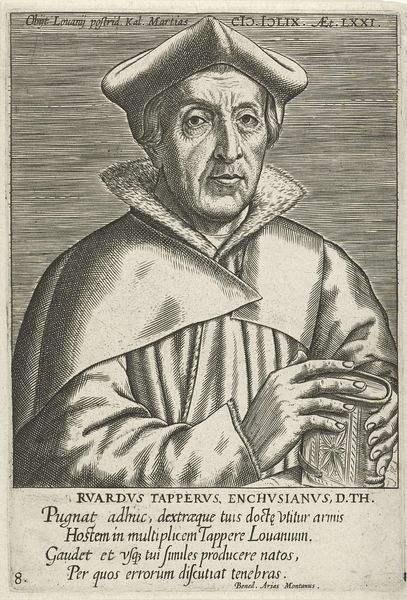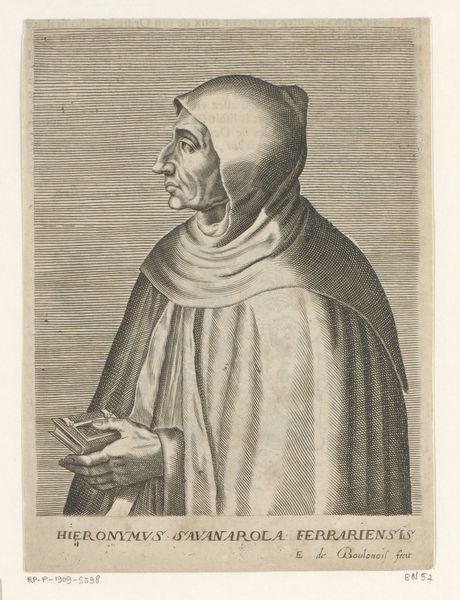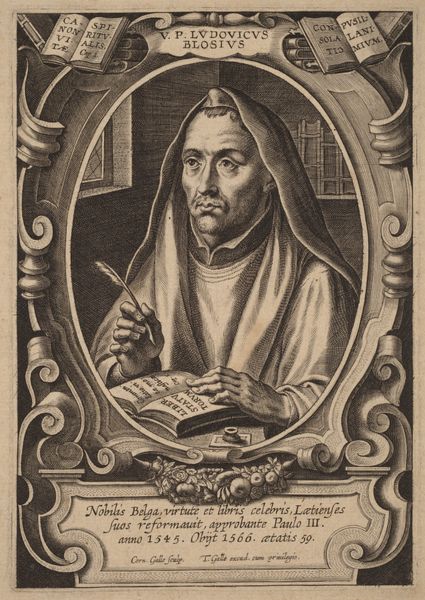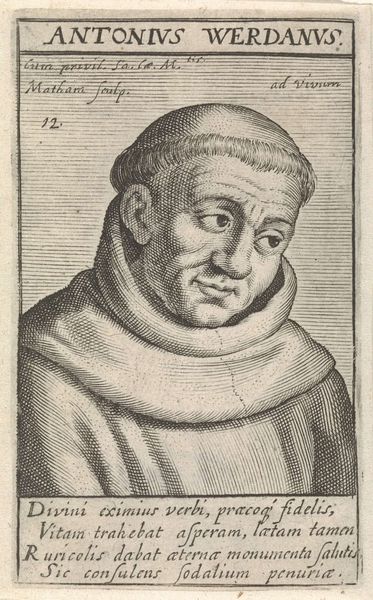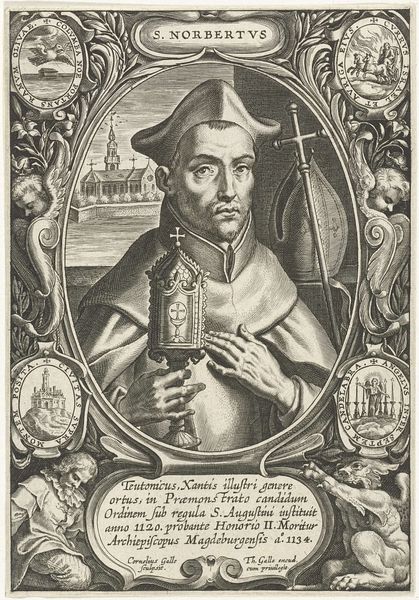
engraving
#
portrait
#
baroque
#
caricature
#
history-painting
#
engraving
Dimensions: height 95 mm, width 62 mm
Copyright: Rijks Museum: Open Domain
Editor: So, here we have "S. Vincentius" by Michael Snijders, sometime between 1610 and 1672, an engraving. I find the detail quite striking. How do you interpret this work, looking at its creation and context? Curator: Let's consider the materiality. Engraving, as a reproductive process, makes this image inherently about dissemination. This isn't a unique, auratic object; it's designed for wide consumption. Think about the labor involved: the skilled hand meticulously cutting into the metal, and the economic structures that enabled this. What statement is being made through widespread availability? Editor: That’s a very interesting point. What comes to mind are the means of production and labor related to its historical religious context. Do you mean the statement is less about high art, and more about spreading accessible narratives for mass consumption? Curator: Exactly. Who had access to these images? How did their value shift as they were traded or exchanged? It pushes us to think about not just *what* is depicted but *how* that image circulated and what material conditions made that circulation possible. And this also challenged boundaries, right? Consider what happens when you take that process and apply it to sacred figures for distribution. It democratizes the art form and blurs that fine art line with everyday production. Editor: It re-contextualizes the whole idea around it by considering the access and use of these sacred images for different populations, right? Curator: Precisely. It pulls the focus away from only artistic interpretation, and reveals social contexts of access, availability, and distribution methods of images like "S. Vincentius" which opens up further consideration. Editor: This is giving me a lot to think about regarding artistic interpretations! Thanks. Curator: Me too!
Comments
No comments
Be the first to comment and join the conversation on the ultimate creative platform.
